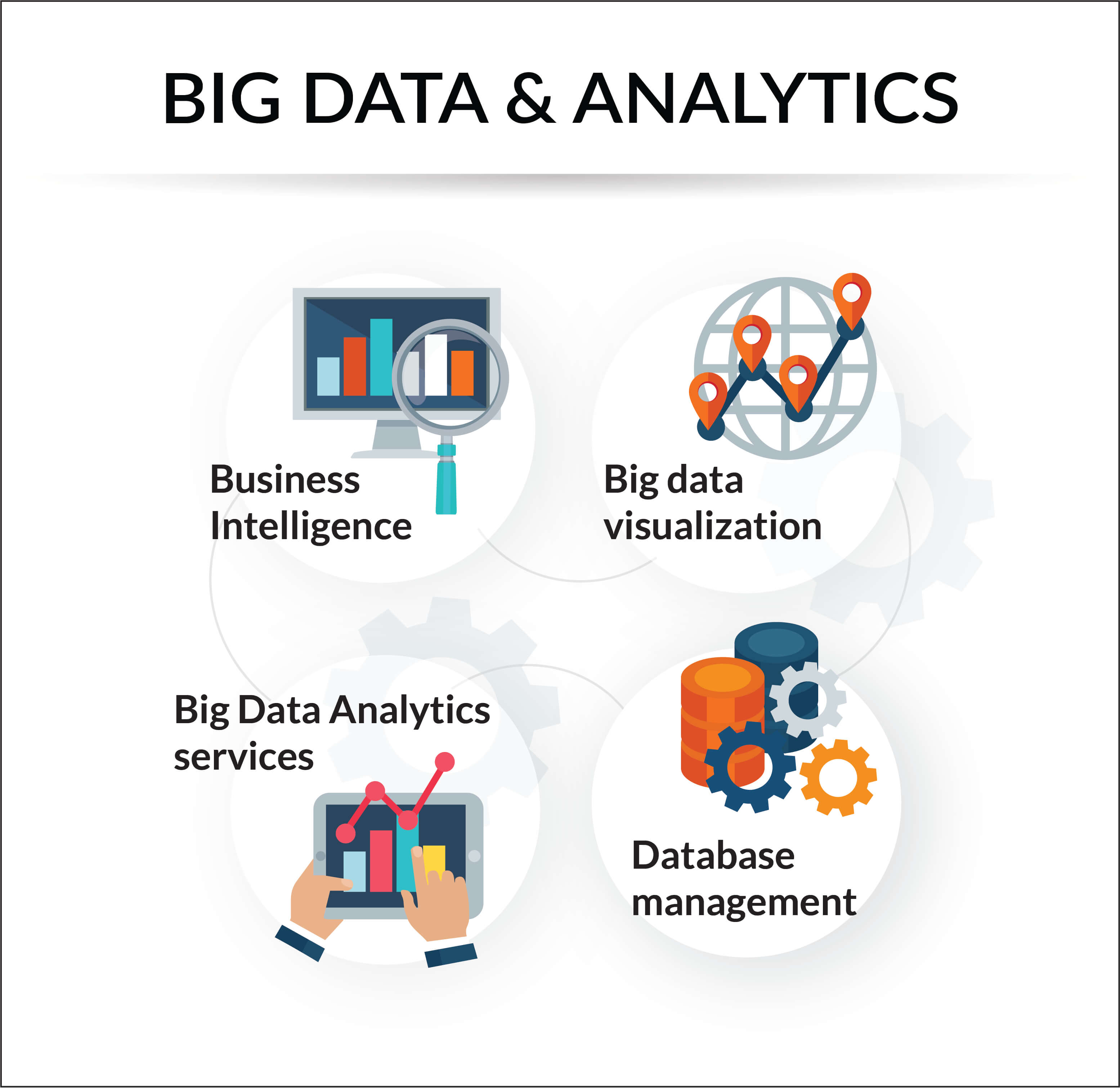This article was published as a part of the Data Science Blogathon.
Introduction
Big data is now an unreplaceable part of tech giants and businesses. Business applications range from customer fraud detection to personalization with extensive data analytics dashboards. They also lead to more efficient operations. Computing power and automation capability are essential for big data and business analytics. The advent of cloud computing made this possible.

What is Big Data Analytics?
Definition of Big Data Analytics: Big data analytics helps businesses and organizations make better decisions by uncovering information that would otherwise be hidden.
Without massive computing power, gaining meaningful insights into big data trends, correlations, and patterns cannot be easy. However, the technologies and techniques used in big data analytics make learning from large data sets easy. This includes data of any structure, source, and size.
Big data visualization predictive models and statistical algorithms are more advanced than basic business intelligence queries. The answers are almost immediate compared to traditional business intelligence methods.
Big data is only getting more significant with the growth of artificial intelligence, social networks, and the Internet of Things with myriad sensors and devices. Data is measured in the “3V’s” of variety, volume, and speed. There’s more to it than ever before—often in real-time. This barrage of data is meaningless and useless unless it can be examined. However, the big data analytics model uses machine learning to examine text, statistics, and language to find previously unknown insights. All of the data sources can be mined for value and predictions.
A Brief History of Big Data Analytics
The advent of big data analytics was a response to the rise of big data that started in the 1990s. Very Long before the term “big data” was coined, the concept was applied to the dawn of the computer age when businesses used large spreadsheets to crunch numbers and find trends.

The large amount of data created in the late 1990s and early 2000s was fueled by new data sources. The popularity of mobile devices and search engines created more data than any company knew what to do with. Speed was another factor. The faster the data was made, the more it had to be handled. In 2005, Gartner explained that these are the “3 Vs.” of big data – variety, volume, and velocity. Recent research by IDC projected that data generation would grow tenfold worldwide by 2020.
Anyone who could tame the vast amount of raw, unstructured information would open up a treasure chest of never-before-seen consumer behavior, business operations, natural phenomena, and population change.
Traditional data warehouses and relational databases were not up to the task. Innovation was needed. In 2006, Hadoop was created by engineers from Yahoo and launched as an open-source Apache project. The distributed processing platform made it possible to run big data applications on a clustered platform. This is the main difference between traditional and big data analytics.
At first, big companies like Google and Facebook used big data analytics. In 2010, retailers, banks, manufacturers, and healthcare companies began to understand the value of being big data analytics companies as well.
Initially, large organizations with on-premises data systems were best suited to collect and analyze large data sets. But Amazon Web Services and other cloud platform vendors have made it easy for businesses to use big data analytics services. The ability to handle Hadoop clusters in the cloud has given any size company the freedom to spin up and run only what they need on demand.
The big data analytics ecosystem is a key component of the agility required for today’s companies to succeed. Insights can be discovered more quickly and efficiently, translating into instant trading decisions that can decide a winner.
Big Data Analytics Tools
NoSQL databases (not just SQL) or non-relational are mostly used for collecting and analyzing big data. The data in a NoSQL database is handled for the dynamic organization of unstructured data versus relational databases’ structured and tabular design.
Big data analysis requires a software framework for distributed storage and processing of big data. The following tools are considered software solutions for big data analytics:

Apache Kafka
• A scalable messaging system that allows users to publish and consume a large number of messages in real-time via subscription.
HBase
• A column-oriented key/value data store that runs on the Hadoop Distributed File System.
Hive
• An open source data warehouse Service for analyzing datasets in Hadoop files.
MapReduce
• A software framework for parallel processing of large amounts of unstructured data in a distributed cluster.
Pig
• It is an open-source technology by Apache Foundation for parallel programming of MapReduce tasks and jobs on Hadoop clusters.
Spark
• An open source and parallel processing framework for running large-scale data analytics applications across cluster systems.
YARN
• Cluster management technology in second-generation Hadoop.
Some of the most used big data analytics tools are:
Apache Hive/Hadoop
• Data preparation solutions for providing information to many analytical environments or data warehouses. Developed by Yahoo, Google, and Facebook.
Apache Spark
• Used in conjunction with heavy computing workloads and Apache Kafka technologies. Created by the University of California, Berkeley.
fast
• SQL engine developed by Facebook for ad-hoc analysis and rapid reporting.
Why is Big Data Analytics Important?
Big data analytics is important because it allows data scientists and statisticians to dig deeper into vast amounts of data to find new and meaningful insights. This is also important for industries from retail to government as they look for ways to improve customer service and streamline operations.
The importance of big data analytics has grown along with the variety of unstructured data that can be mined for information: social media content, texts, click data, and the multitude of sensors from the Internet of Things.

Big data analytics is essential because traditional data warehouses and relational databases cannot handle the flood of unstructured data that defines today’s world. Best suited for structured data. They also cannot handle real-time data requests. Big data analytics fulfils the growing demand for real-time understanding of unstructured data. This is especially important for companies that rely on rapidly changing financial markets and web or mobile activity volume.
Businesses understand the importance of big data analytics to help them find new revenue opportunities and improve efficiencies that provide a competitive advantage.
Benefits of Big Data
The main advantage of Big Data. Big data analysis helps businesses make better decisions while maximizing operations and reducing risk and efficiency.
- By using big data analytics tools, businesses worldwide are improving their digital marketing strategies by leveraging data and reducing risk from social platforms. Insights from Big Data enable companies to improve their products and services based on customer concerns.
- Big Data merge data from multiple sources to create useful information. Companies can save money and time by using analytics tools to sort out redundant and unwanted data.
- With the help of big data analytics, companies could increase their revenue by generating more leads. Many businesses turn to him to find out how well their products and services are doing in the market and how their customers respond to them.
Conclusion
Thanks to Big Data statistics, you can always be one step ahead of your competitors. To better serve your clients, you can use the promotions and offers provided by your competitors. It is also possible to learn about customer habits and trends using Big Data insights to provide them with a “personalized” experience.
- Big data analytics is important because it allows data scientists and statisticians to dig deeper into vast amounts of data to find new and meaningful insights. This is also important for industries from retail to government as they look for ways to improve customer service and streamline operations.
- By using big data analytics tools, businesses worldwide are improving their digital marketing strategies by leveraging data and reducing risk from social platforms. Insights from Big Data enable companies to improve their products and services based on customer concerns.
- The big data analytics ecosystem is a key component of the agility required for today’s companies to succeed. Insights can be discovered more quickly and efficiently, translating into instant trading decisions that can decide a winner.
The media shown in this article is not owned by Analytics Vidhya and is used at the Author’s discretion.




